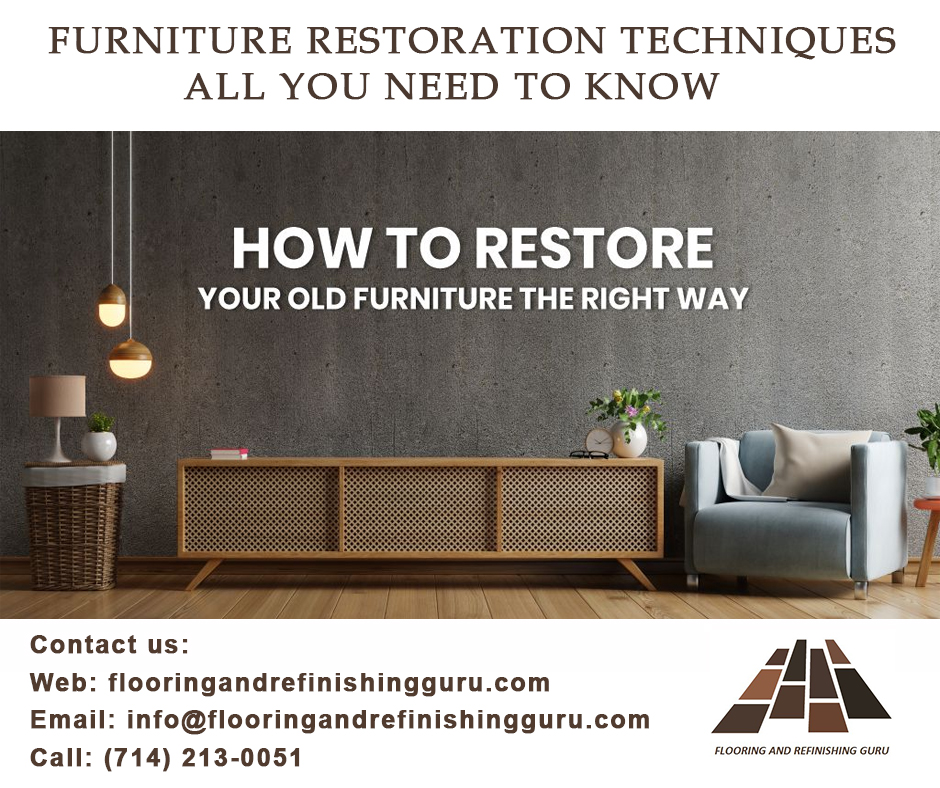
Are you a DIYer who wants to gain knowledge about the refinishing process or a fittings expert who wants to search for new ways to manage work? Well, you’ve just landed on the right blog! Transform your furniture with our expert furniture restoration services. Restore beauty and functionality. We’ll provide user-friendly and unique solutions for discoloration, scratches, deep marks, etc.
Why Opt for Restoration?
Your furniture need not be a collector’s item to render satisfaction and value. If the fixture fits your purpose and dwelling, restoration will be feasible. Following are some queries to ask yourself for self-assurance:
- Will the furniture fit the space? Will it look attractive?
- Is it constructed from one-piece wood material or several?
- Is construction durable? Check for loose patches.
- Will restoration cost less than buying new furniture?
Restoration Procedures
Cleaning & Polishing Wood
The first and foremost technique that you can select is ‘Cleaning & Polishing the Wood Décor’. You should use Furniture Cleaner-Conditioner to clean wood, cover scratches, restore natural grain, eradicate cloudiness, and more.
To apply it, spread concentrated layers of paper on floors and ventilate the room. Heat water and pour into a cup or small can. After a while, add the cleanser-conditioner into the cup and cover the surface. Don’t Stir! Dip the cloth into the oily mixture and distribute over a small area. Ensure additional moisture away from joints to restrict glue from losing its adhesiveness. Lastly, use a steel wool pad for cleaning the wood surface.
Leather Furniture
Leather on different furnishings, such as tables and chairs can be renewed by washing with castile soap and water. Try not to use polish or varnish on the surface because of stickiness.
Washing
- Dip sponge in warm water
- Rub cloth over castile soap
- Scrub leather quickly
- Rub leather with moist cloth
- Rub surface with dry cloth
Leather Dressing
To apply the conditioner, apply small amounts of the mixture (water, lanolin oil, and neat-foot oil) to the surface with your fingers. Rub your hands until dressing is absorbed.
How to Repair Damaged Finishes?
Damaged finishes can be repaired without the refinishing process. Spots or white rings are caused by heat, moisture, or alcohol, paper adhesion, scar finishes, and more. Following are some effective solutions for each problem.
Paper Adhesion
Use lightweight oil (paraffin, olive, or mineral) and a steel wool pad. Pour oil on the surface to saturate paper and rub with steel wool until the contaminant is removed. Wipe surface with oil and use a dry cloth.
White Rings
- Dip steel wool pad into oil and dust pumice over the ring. Rub with wood grain and apply to the entire surface. Wipe the area once the tarnish is removed.
- Dip your fingers into oil and salt. Rub the spot with the mixture. Rubbing is required if spot is tough to remove.
- For tough spots, dip cloth in water and place it over the bottle of ammonia (open-mouth). Move damp cloth over the spot and dry it afterwards.
Scratches
On Wood
To clean and blend color of scratched area, use furniture cleanser-conditioner. Use broken pieces of walnut or butternut to fix minor scratches. Rub the surface diagonally until the area darkens.
On Oil Finish
Use steel wool pad immersed in mineral oil, or linseed oil. Rub carefully with wood grain. Wipe the entire surface with cloth (oil-mixed and dry).
How to Color Scratch?
- Lessen the viscosity of colors with turpentine oil.
- Use varnish stain
- Use clear varnish
- Use commercial scratch remover
Small Cracks
Repairs can be finalized over the existing surface or during the refinishing process after the coats are applied. Fill the crevices with wood-forming plastic (you can soften the material with denatured alcohol, if necessary).
How to Use Wood-Forming Plastic?
Push wood-forming plastic into cracks with your finger. Level plastic with wood surface with a suitable auxiliary, such as a knife. When dry, level with steel wool pad. Lastly, apply finish over the fixed surface.
Conclusion
Wooden furniture needs periodic maintenance for long-lasting finesse and attraction. Connect with Flooring and Refinishing Guru for more information and guidance.

